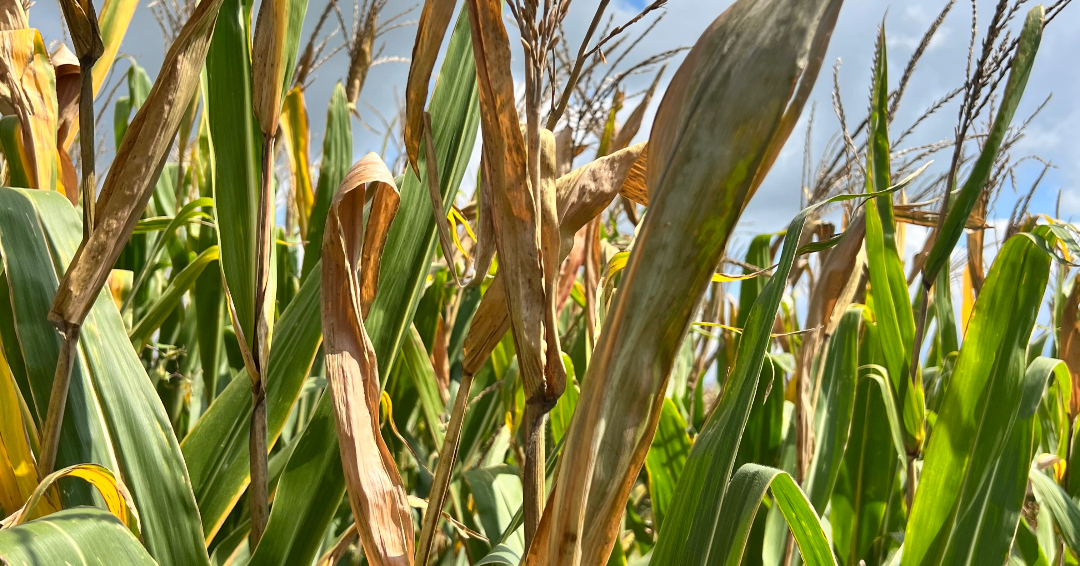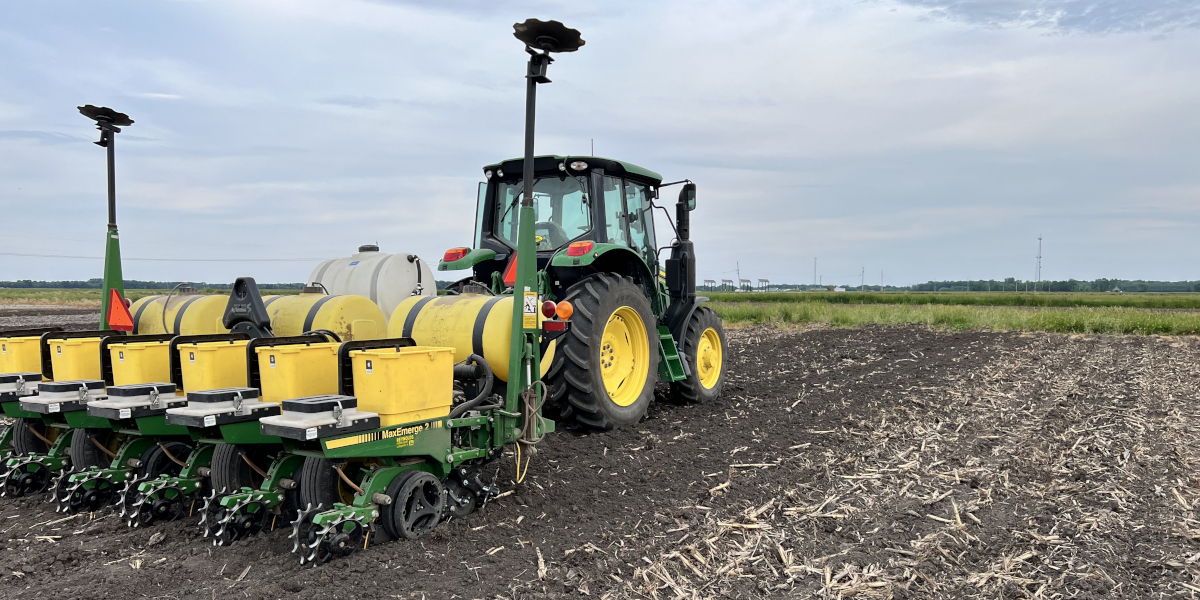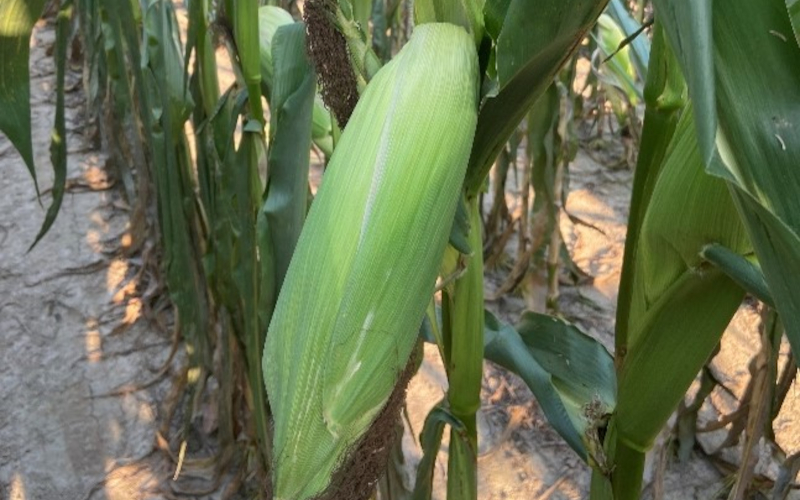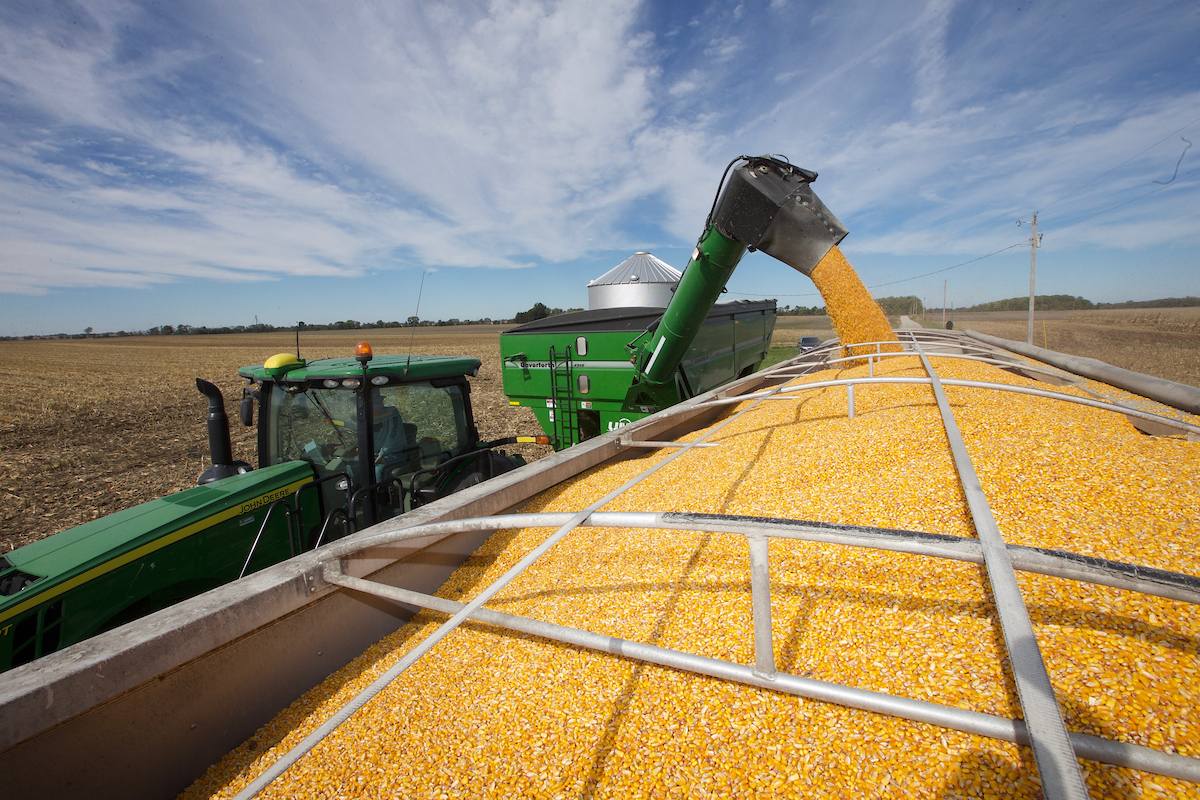Top "Dieback" and Senescence Patterns in Corn
As corn plants progress through grain fill and approach maturity, plant leaves naturally begin to senesce or die. Leaf senescence is a naturally occurring, whole-plant process where corn leaves lose their greenness due to a reduction in chlorophyll and is a function of degradation and the movement of nutrients and assimilates to the ear and kernels so that grain fill can be sustained and completed. In addition, corn leaf senescence typically begins before all leaf area has been developed (i.e., before pollination) and increases during the grain fill period. Previous research has associated both an extended grain fill period and sustained leaf greenness (e.g., delayed senescence) as two contributing factors to improvements in grain yield. Therefore, stressful conditions during grain fill which cause accelerations in grain fill, leaf senescence, and plant maturity have been attributed to reductions in yield.
One noticeable symptom of plant stress during grain fill is the earlier-than-expected senescence of the upper portion of the plant, or top “dieback” in corn (Figures 1 and 2). The pattern of leaf senescence in corn is often thought of as starting from the bottom of the plant and slowly progresses toward the upper portion of the canopy. However, this may not always be the case and can vary or change based on hybrid chosen and environmental conditions. When these symptoms are noticed across many different hybrids, across entire fields, show up much earlier than expected during grain fill, and are occurring simultaneously with stressful conditions, this can be an indication that grain fill and yield may have been impacted. Especially if the top 4 – 5 leaves are senescing. Common environmental stressors that can cause these symptoms include both excessive heat and dry conditions during grain fill. Excessive heat and drought stress can promote or accelerate leaf senescence and plant maturation and highlight the difficulty of plants attempting to maintain green leaf area with high transpiration demands.
These symptoms were most noticeable throughout various Indiana corn fields following excessive heat and dry conditions in the later portion of August 2023 (Figures 1 and 2). During the week of August 21 in West Lafayette, IN, air temperature highs averaged 91 degrees F, with a couple days reaching much higher temperatures. Fields that had indications of stress (e.g., nitrogen deficiency) heading into these conditions showed the most rapid changes in leaf senescence and visual symptoms of top dieback, and were likely impacted the most. Therefore, assessing plant health, leaf senescence timing, and leaf senescence patterns during grain fill can be important when determining how well (or how not so well) your crops yield ended up.
Additional Resources:
Nielsen, R.L. 2011. Top Leaf Death or “Dieback” in Corn. Corny News Network. Purdue Univ. Extension. https://www.agry.purdue.edu/ext/corn/news/timeless/topleafdeath.html#:~:text=Death%20of%20top%20leaves%20can,during%20the%20grain%20fill%20period.
Figure 1. Top leaf senescence observed in early R5 growth stage corn. West Lafayette, IN, August 2023.

Figure 2. Top leaf senescence observed in early R5 growth stage corn. West Lafayette, IN, August 2023.






